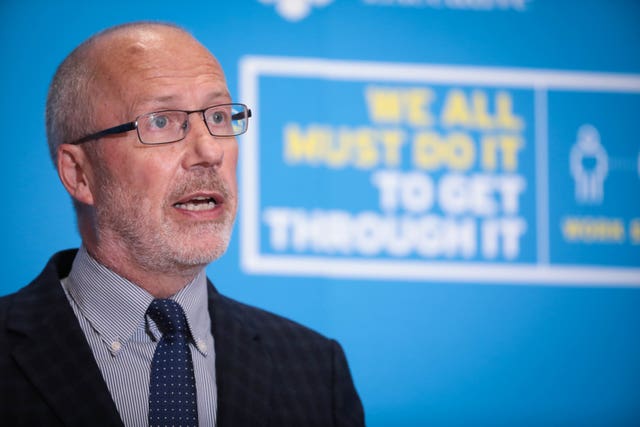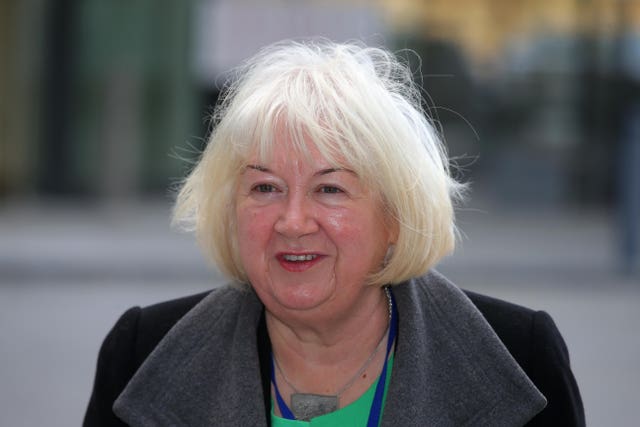Northern Ireland ‘faces more severe Covid wave due to flagging vaccination rate’
The Assembly’s Health Committee was told of ‘enormous concern’ at the slow uptake of vaccines among the 18 to 29 age group.

Northern Ireland could be facing a more severe wave of Covid-19 than other parts of the UK due to its flagging vaccination rate, Stormont’s chief scientific adviser has warned.
Professor Ian Young said there is concern that people in the region appear less willing to get a jab than those in the UK.
His comments to the Assembly’s Health Committee came as the head of the vaccination programme, Patricia Donnelly, said uptake rates have “gone off a cliff” since the rollout opened to under-30s.
Also appearing before the committee, which was recalled from recess to discuss the increasing Covid pressures within hospitals, Ms Donnelly confirmed that vaccine booster jabs will start to be rolled out in Northern Ireland in September.
In Northern Ireland, 83% of the adult population have received first doses of a Covid-19 vaccine while 71% are fully vaccinated.

Just under 60% of 18 to 29-year-olds have received a first jab. The next lowest uptake rate is 70% for the 30-39 age group. All cohorts over the age of 60 have a 100% uptake rate.
Professor Young told the committee: “I have to note that we lag behind England, Scotland and Wales in terms of first dose vaccination by around by 5% to 6% minimum, and in some cases by more than that.
“In terms of second doses vaccination, we’re very similar to England and Scotland but we lag behind Wales by about 10%.
“So, there has been a concern that the willingness of the Northern Ireland population to come forward for vaccination, for whatever reason, seems less than that in other parts of the UK and that will lead to a larger susceptible population in Northern Ireland and therefore the potential for a more severe wave on this occasion.
“Every small percentage increase in vaccination that we can achieve will make a real difference in terms of how quickly the current wave will resolve and the potential for future waves.”

Ms Donnelly told MLAs on the committee that vaccination uptake among the 18-29 age cohort has been “incredibly slow”.
She said it is a cause of “enormous concern” that the pace of the vaccination programme “went off a cliff” in June when it opened to this younger age group.
Ms Donnelly said behavioural experts have advised that the reluctance of young people to come forward is more about convenience than due to any safety concerns.
She said officials have undertaken a number of initiatives to encourage young people to come forward, including providing areas in vaccination centres where they can take selfies.
“We realised that if we didn’t allow the opportunities for selfies, it may not actually even be seen as an important event, so we created those areas within the centres,” she said.
Ms Donnelly said 31,000 more people need to be vaccinated to take Northern Ireland to 85% of adults having first doses. She expressed hope that this can be done by the end of August but said “hard yards” will be needed to achieve it.
She added that, while 90,000 people a week were getting vaccinated earlier in the rollout, the programme has slowed to the extent where it is “lucky” if 1,000 to 2,000 people are getting jabbed each day.
Professor Young said increasing positive case numbers may have “plateaued” in recent days.
He added that there are two possible explanations for this – altered behaviours due to the good weather, or higher levels of immunity among younger people.
He said if the weather was the cause then case numbers should start to rise again now the heatwave has passed.
If the drop was down to increased immunity among younger people then cases are expected to gradually decline, he added.
In terms of modelling the virus, Professor Young said the trajectory of case numbers has now dropped below the central scenario and is between the central and optimistic models.
He said under the central scenario case numbers would peak at around 3,500 to 4,000 a day in this wave – a figure based on the assumption that all those infected came forward for testing.
The central model predicted around 400 Covid-19 inpatients by the end of August.
Professor Young said hospital numbers are tracking between the central and pessimistic models.
However, he stressed that the numbers in hospital, including in ICU, are currently a third of those witnessed in previous waves.
He credited the vaccines with reducing the percentage of infected people who were ending up in hospital. He said this rate was between 5% and 6% in February’s wave and is now between 3% and 4%.
Given the recent drop in case numbers, the chief scientific adviser said he expects inpatient numbers to “stabilise” towards the end of next week.





